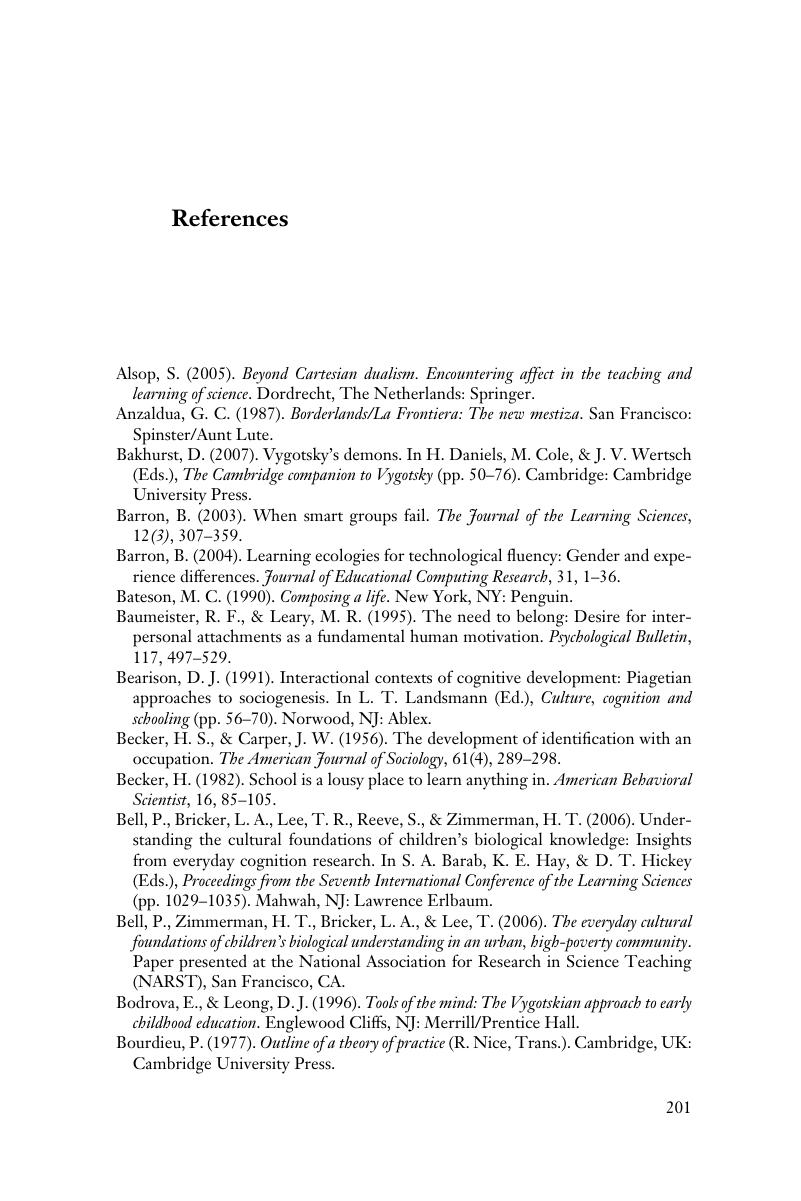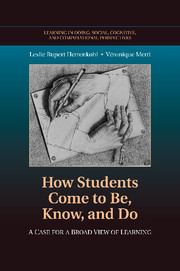Book contents
- Frontmatter
- Contents
- Series Foreword
- Acknowledgments
- How Students Come to Be, Know, and Do
- Introduction
- 1 The Context Lens
- 2 How Ways of Knowing, Doing, and Being Emerged in the Classroom: Interpersonal Interactions and the Creation of Community, Part I
- 3 How Ways of Knowing, Doing, and Being Emerged in the Classroom: Interpersonal Interactions and the Creation of Community, Part II
- 4 Personal Lens of Analysis: Individual Learning Trajectories
- Conclusion
- References
- Index
- Titles in the series
- References
References
Published online by Cambridge University Press: 06 December 2010
- Frontmatter
- Contents
- Series Foreword
- Acknowledgments
- How Students Come to Be, Know, and Do
- Introduction
- 1 The Context Lens
- 2 How Ways of Knowing, Doing, and Being Emerged in the Classroom: Interpersonal Interactions and the Creation of Community, Part I
- 3 How Ways of Knowing, Doing, and Being Emerged in the Classroom: Interpersonal Interactions and the Creation of Community, Part II
- 4 Personal Lens of Analysis: Individual Learning Trajectories
- Conclusion
- References
- Index
- Titles in the series
- References
Summary

- Type
- Chapter
- Information
- How Students Come to Be, Know, and DoA Case for a Broad View of Learning, pp. 201 - 212Publisher: Cambridge University PressPrint publication year: 2010

